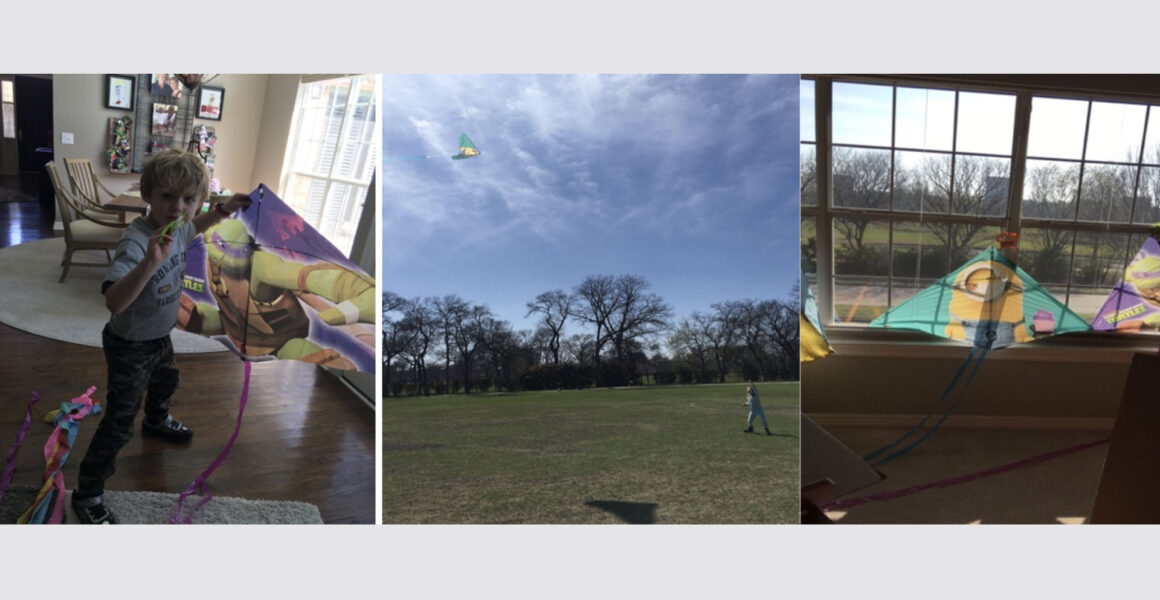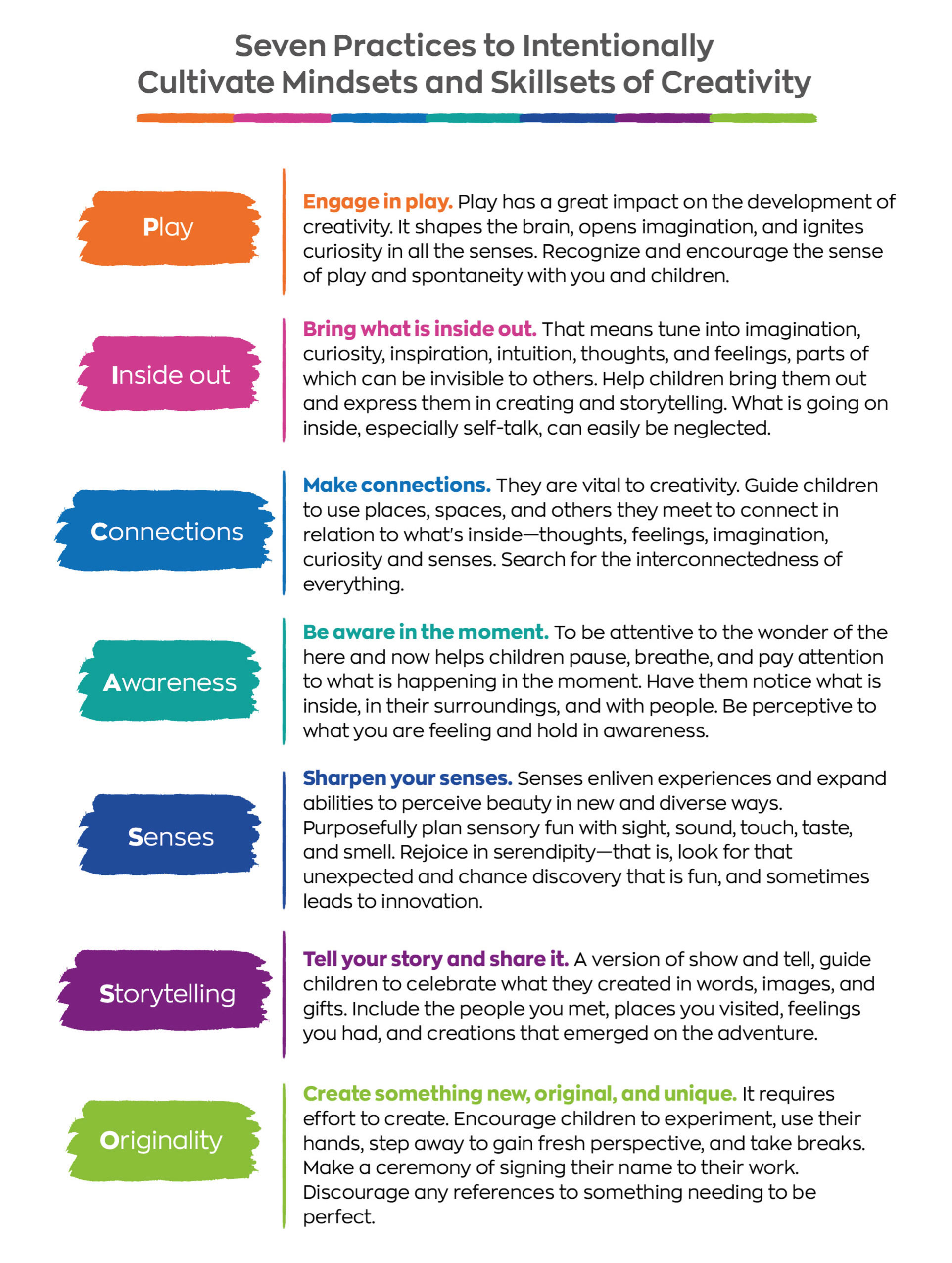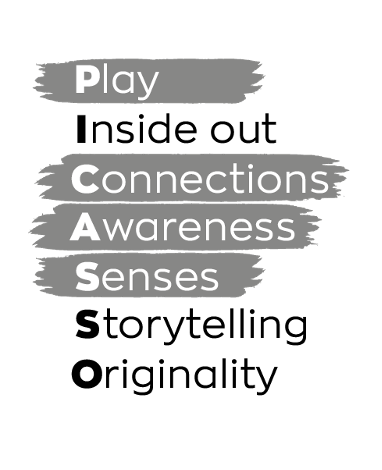Let’s Go Fly a Kite

My birthday is in March. When I was a child, each year I received a kite on my birthday from a family friend. Through the years it seemed to go hand in hand with the expression: “March comes in like a lion and out like a lamb.” While I learned a few folklores about the meaning of that phrase, I still associated it with the promise there would be some perfect conditions for flying my kite in March. And there always were. Light winds invited us out to play on an occasional warm day in Ohio. Fast forward, my grandson was born in March. It was easy to plan creative experiences around colorful kites and their flowing tails to celebrate his birthday as well. Now in Texas, the winds are stronger and March weather is much warmer, and still a perfect month for playing with kites! Let me show you how flying a kite can grow skills of creativity.
Seven practices to cultivate creativity
I introduced seven practices to intentionally cultivate creativity in my book, My Macaroni Sings, Your Guide to Cultivating Creativity. I used PICASSO as a mnemonic, that is, a memory device to easily remember them and as a framework for what they mean. Each word has a call to action to practice. Below is a summary of them with highlights from my book on why they are important and how to nurture them.

Start with play
In this creative activity, you are sure to experience the magic of intentionally cultivating creativity in yourself and someone you love. You can mix and match the PICASSO seven practices and have children tell their stories with wonder. In this case It all starts with Play!
Creative experience: Let’s go Fly a Kite
PICASSO focuses: Play, connections, awareness, and senses.
Intention: Plan an adventure where you and your child can be totally present in the moment, play in space that transcends time, and prepare to create something original.
 All PICASSO practices are used in these activities. However, there is emphasis on play and the exulted state of mind it puts you in. Did you know the impulse to create is the result of the impulse to play? This is what Stuart Brown, MD, author of the book Play, and founder of the Institute for Play, has found in his extensive research. Play has the ability to put us in an exulted zone of transcendence over time. It keeps us in the here and now, connects us naturally to our surroundings, often heightens our senses, and has the potential to invoke the sense of being part of something greater than ourselves.
All PICASSO practices are used in these activities. However, there is emphasis on play and the exulted state of mind it puts you in. Did you know the impulse to create is the result of the impulse to play? This is what Stuart Brown, MD, author of the book Play, and founder of the Institute for Play, has found in his extensive research. Play has the ability to put us in an exulted zone of transcendence over time. It keeps us in the here and now, connects us naturally to our surroundings, often heightens our senses, and has the potential to invoke the sense of being part of something greater than ourselves.
- Sing a song. Create curiosity by having a sing-along to the tune “Let’s Go Fly a Kite.” It is available on iTunes, YouTube, Disney, or you might still have the original soundtrack from the movie, Mary Poppins, and find it there. Listen to it and have everyone sing together. Discuss the lyrics and ignite the imaginations of kites soaring in the sky. Use some of the lyrics throughout the experiences to ask questions, further pique curiosity, and let imaginations soar. Here are some examples.
- What is the highest height a kite can go?
- How will we send it soaring?
- How will we keep it soaring?
- What is the atmosphere? Can you see it?
- What does your kite look like in the sky?
- Does it resemble anything in nature?
- Describe the colors and the movements.
- What is the purpose of the tail on the kite?
- How are kites like (and not like) birds?
- What would happen if your string broke?
- What shapes are in your kite? Colors?
- What name would do you give your kite?
- How can we safely land our kites?
- How does it feel to fly a kite?
- Make a kite. There are many kinds and prices for kites online. Some are ready to assemble, and others include DIY paints and emblems to design your own. Presumably you will purchase a kit and it will have kite paper, spars, string, tails, and directions. Have everyone make or build their kite. This helps kids learn to follow the simple directions and goes right to the heart of creativity—using our hands. Hands-on experiences delight, activate the sense of touch, and encourage experimentation and risk taking. It also reinforces the notion that creating takes effort.
- Fly a kite. Go out to a park or large outdoor area. Make sure it has lots of space for running and a chance to be immersed in nature—the ground and the sky. Natural settings almost always summon one to return to play, so begin and fly the kites. Depending on wind conditions, it might take some persistence to get the kite aloft. This time is ripe for conversations about air, wind, velocity, shapes of kites and the colors in the sky. It is also a great time to talk about how it feels to be outdoors, what it must be like to be the kite flying, soaring, and dancing, and what in nature a kite might emulate.
- Paint the experience. Have the children paint (or draw in their sketchbooks) their kite-flying experience. It is one more way to tell their story, express feelings, and show what is unique and original for them. In our case, we displayed all the three kites in the studio and set about painting, after we paused for lunch and relaxation. My grandson finished early and pulled up a book amid the trailing colors of the tails on the floor and the sunshine streaming in.





